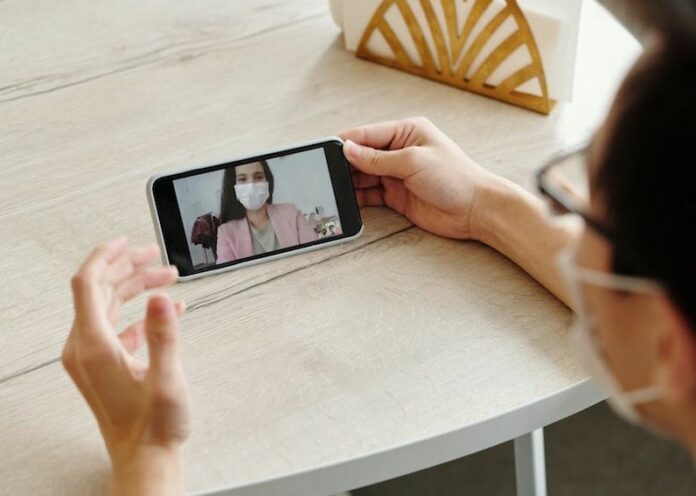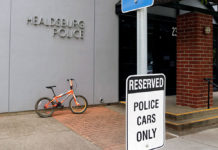As the COVID-19 pandemic enters its fourth week locally, early reports indicate that Gov. Gavin Newsom’s March 19 order to shelter-in-place and subsequent “social distancing” are helping to keep demands on the local health care system below capacity.
Still, the crisis is far from over. As of this writing, we’ll be required to stay at home through at least May 3, and some predict it could end up being even longer than that.
This means that Healdsburg residents must stay vigilant and continue adequate distancing measures — the most important of which is staying at least six feet from others to reduce the possibility of disease transmission.
In addition, based on guidance from epidemiologists across the nation and Sonoma County Public Health Officer Dr. Sundari Mase, people should always wear a face mask or other form of face covering when engaged in activities outside the home such as food-shopping, getting gas, or even just walking around the neighborhood.
The reason for this isn’t to protect yourself; it’s to protect others from possible infection.
Mase said that because COVID-19 is transmitted when the virus enters your system via respiratory droplets, the best way to keep the community safe is to just stay home.
“Staying safely at home and physical distancing are scientifically-proven to be the most effective methods to slow the transmission of COVID-19 and keep our communities healthy,” she was quoted as saying in a release last week.
Put differently, the better we do at distancing and sheltering in place, the sooner we can return to normalcy.
Unfortunately, it seems, some people are getting complacent. Neighbors are still throwing parties. Kids are still having playdates. People are still grocery-shopping without masks. Residents are still using city parks (even though all of them now have big signs that say “THIS SITE CLOSED”). In some cases, calls to local police about social distancing violations have spiked in recent weeks. Likely dozens of other violations go unreported.
With this in mind, here is a basic refresher on what is acceptable distancing:
• No closer than six feet to others;
• No participation in public or private gatherings;
• No direct contact with people outside your household, even if they are related to you.
To be more specific, this means no in-person happy hours on your street. No hugging. No high-fives. It also means no direct handoffs to friends — if you want to exchange something, set it down, step back, encourage your friend to pick it up and wipe it down immediately, then go wash your hands.
What’s more, appropriate distancing prohibits queuing as we used to do it; if you have to stand in a queue, now you only should do so with at least six feet between you and the people in front and in back of you. (Even then, a recent study by a researcher at Portland State University said six feet is still too close, and that people should be distancing by no fewer than 20 feet.)
Gloves are another point of confusion. Should you wear them? Do they make things worse?
On this point, the thinking is varied. While some germ experts suggest that rubber gloves can be an added layer of protection against COVID-19 (and other germs, for that matter), others caution that gloves are only effective if washed and replaced frequently. Many epidemiologists say that the wrong kinds of gloves might actually transfer germs from one surface to another, creating new problems unnecessarily.
Dr. Robert Amler, vice president for government affairs at New York Medical College and a former CDC chief medical officer, told Good Housekeeping that gloves only work if you’re careful.
“The glove itself is only as good as not touching your face with the glove,” he said in an article that published last week. “As long as you’ve washed your hands or use hand sanitizer afterwards, you’ve accomplished the same thing.”
Much of this information is updated regularly, so it behooves you to stay abreast of what’s new.
Meanwhile, for general perspective on surviving this time, consider the advice of COVID-19 survivor and Seattle resident Christy Karras. Karras contracted the virus at a dinner party among friends — a party at which nobody was symptomatic. Since recovering, she has given nearly a dozen interviews. Her take?
“Only hang out with the number of people you would be willing to give coronavirus to, because you could literally spread it to everyone you have a drink with if you’re within six feet and facing them,” she said. “Much of the transmission is via face-to-face interaction with asymptomatic people, so you just have to assume you and everyone you know could have it, even if you feel terrific.”
45.8
F
Healdsburg
May 23, 2025










